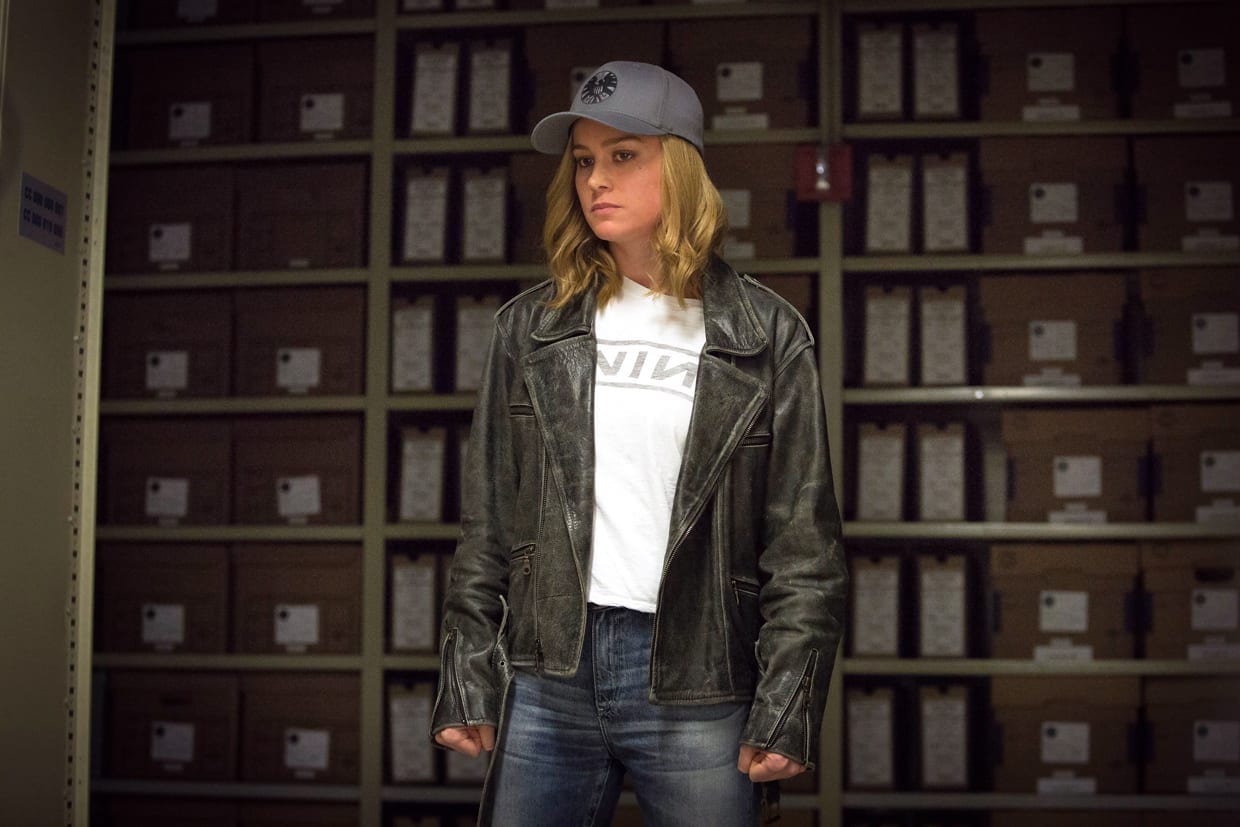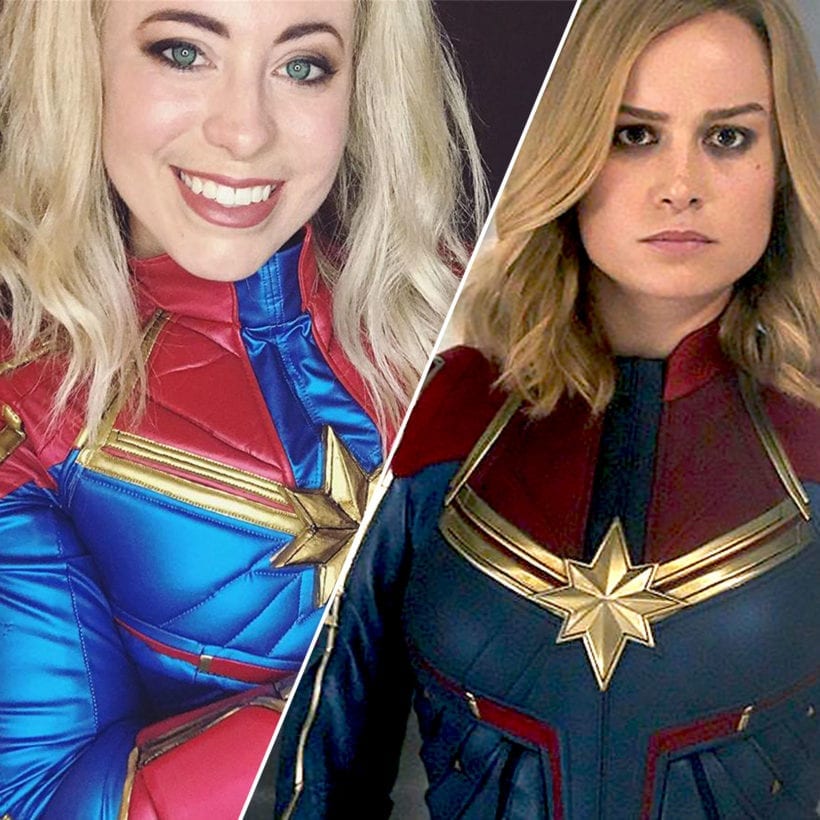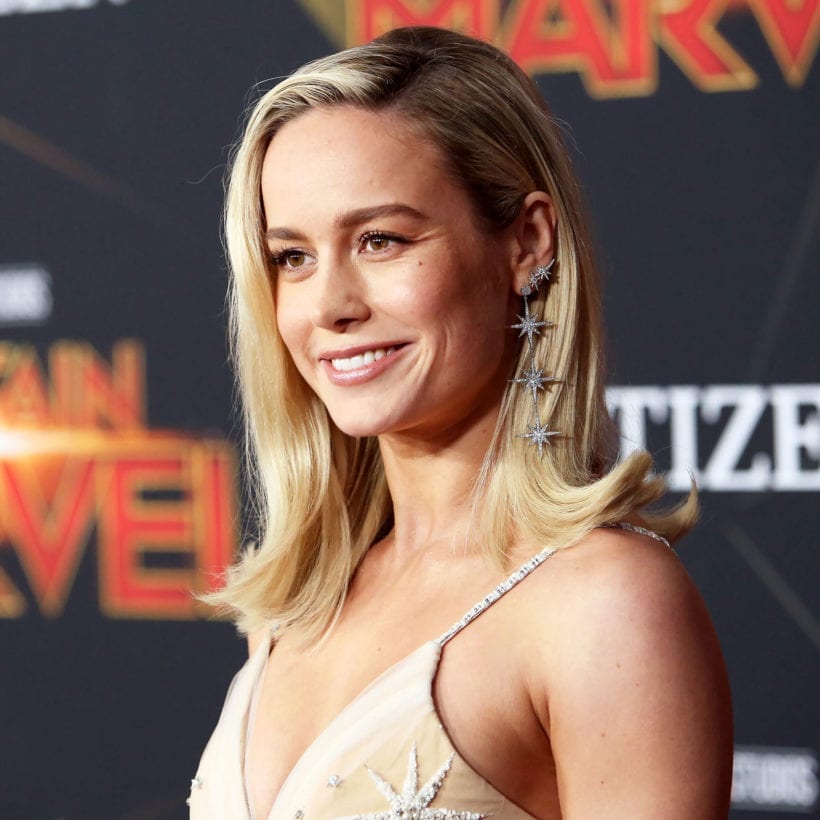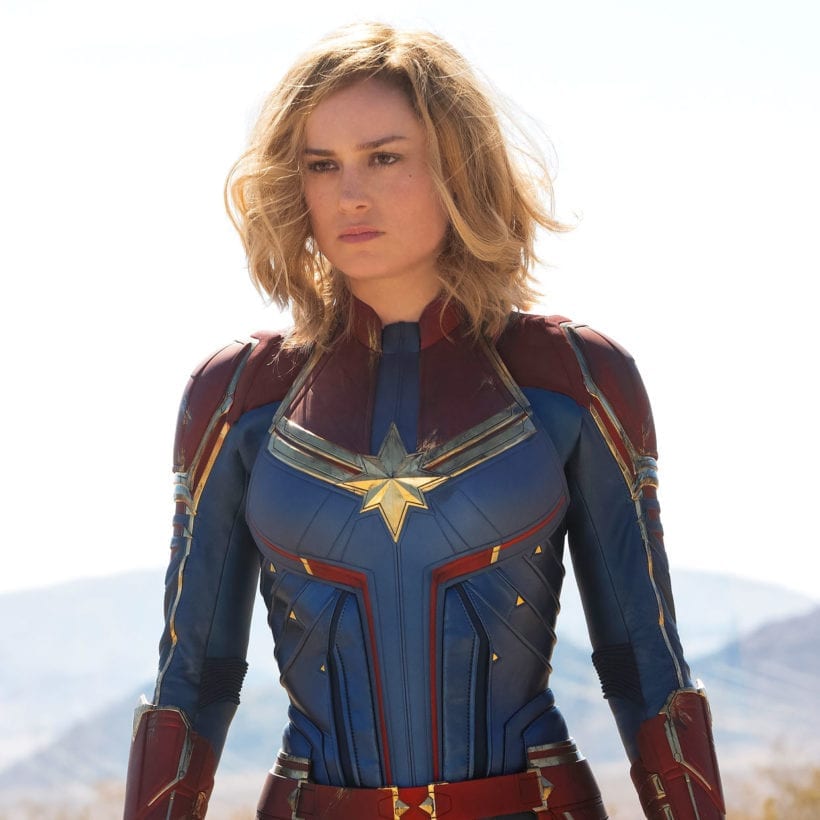Wonder Woman. Batgirl. Captain Marvel. Notice something?
That last one could be a man or woman. In fact, Captain Marvel has been both in comic books. But in “Captain Marvel” the movie, the captain is Carol Danvers. And her gender is essential, not incidental. Though she can do anything a man can do, that does not mean she does it “like a man.” She does it her way, and that way is nuanced.
In the film, Danvers is played by Brie Larson and introduced as Vers, pronounced “Veers,” a humanoid Kree warrior fighting the shape-shifting alien Skrulls. In a mission gone awry, she ends up crash-landing into a Blockbuster Video on Earth in the year 1995.
Unsure of exactly who she is or where she came from, Danvers begins to unravel her past. She dons a Nine Inch Nails T-shirt, teams up with Nick Fury (Samuel Jackson digitally de-aged and pre-eye patch), and reunites with her best friend, a fellow former Air Force pilot (surprise!).

The film, which took in $455 million globally on its opening weekend, is the sixth highest global debut ever and the second strongest debut behind “Black Panther” for a superhero origin story in North America. Sales figures suggest more than half the audience was male. The theater I saw it in had about twice as many men as women.
And yet, Larson has called “Captain Marvel” a “feminist movie” and says its great love story is her relationship with her best friend, Maria Rambeau, played by Lashana Lynch. The friendship is also the movie’s truly great origin story: Reuniting with Maria and her young daughter reignites Carol’s sense of humanity and purpose and sets her on the course to attempt to end an intergalactic war.
The storyline is not the only thing feminist about “Captain Marvel.” Yes, it is the first solo female-led film in the Marvel Cinematic Universe’s 10-year history. And yes, the president of Marvel Studios has called Captain Marvel the most powerful hero in the MCU.
But there are women on the other side of the camera as well: director Anna Boden (along with Ryan Fleck); screenwriters including Geneva Robertson-Dworet, Nicole Perlman, Meg LeFauve and Anna Waterhouse; costume designer Sanja Milkovic Hays; and composer Pinar Toprak. The movie also features riot grrrl anthems from Garbage, No Doubt and Hole, plus bangers from Salt-N-Pepa, Des’ree and TLC.
https://www.instagram.com/p/BtcFoFtj3TN/
“That’s a wonderful thing that Marvel understood innately,” Larson said in an interview with Mashable. “That if you’re gonna tell this story, you’ve got to make sure that it’s really embedded in everything. It’s not good enough to just make it be me.”
Larson champions female friendships and feminism off-screen as well — she has taken to Instagram to highlight women designers, such as Kate and Laura Mulleavy of Rodarte, and to give shout-outs to other actresses, including Lynch and Emma Stone. And, she was an early adopter of inclusion riders and a collaborator on Time’s Up, an initiative she links to in the bio of her Instagram account.
I love that she’s unapologetic. She can’t be contained, and I think that is such a beautiful thing.
Larson, who has been acting since she was a child and won an Oscar in 2016 for “Room,” believes that part of what makes her character so strong is, well, her strength.
“I love that she’s unapologetic,” she said in an interview with ET online. “I love that she’s not apologizing for her strength — first as just a human in the Air Force — that she’s never trying to shrink herself because of who she is. She can’t even be somebody else if she wanted to. She can’t. She can’t be contained, and I think that is such a beautiful thing.”
But Danvers’ strength also stems from her refusal to contain her emotions or bow to her male critics. Early in the film, she veers off a go-kart racetrack and is yelled at by her father for driving too fast and being there in the first place, which is clearly not a warning the pilot-to-be heeds. And her Kree commander, Yon-Rogg (Jude Law with yellow eyes), even tells her that the key to harnessing her powers is to suppress her feelings. Danvers does that for much of the film and is a competent badass. She stops doing it toward the end, casting off the shackles of patriarchy, and becomes powerful enough to blast Yon-Rogg into a cave and fly through galaxies unaided by a spaceship.
She uses this strength in her own life to counter trolls who say her Captain Marvel should smile more, sharing altered photos of Iron Man, Doctor Strange, and Captain America grinning like banshees in her Instagram stories. (In the film, a man on a motorcycle tells Danvers to smile for him, and she promptly steals his motorcycle.)
And Larson has uploaded videos of herself in beast mode to Instagram, pushing a 5,000-pound Jeep, thrusting a 275-pound barbell with her hips and scaling the ceiling of a rock-climbing gym.
Which is not to say that she is all grit or all glee. Like Danvers, Larson is not either/or, she is both: a leader and a cheerleader, hard and soft, a powerlifter and an earnestly goofy lyrical dancer who posts snippets of herself swaying to English indie-pop in a softly lit studio with a disco ball spinning overhead.
“The thing that I thought was my weakness was my greatest strength,” she said in an interview with USA Today. “My introversion, the thing that made me go, ‘Well, I couldn’t be a superhero,’ is the same thing that I think makes this story important to me. Because I’m saying, ‘I’m flawed, I don’t know how to do this, I’m still figuring it out, I’m learning, I want to grow.’ But I’m committed to myself.”







